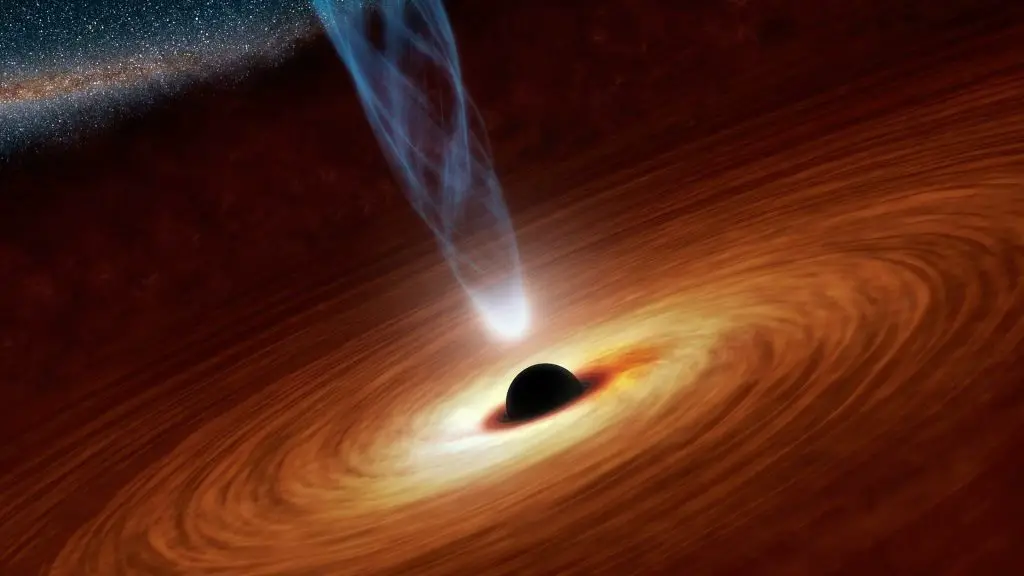Astronomers recently discovered a river of hydrogen gas flowing outward from the Large and Small Magellanic Clouds. These are two dwarf galaxies that exist in the outskirts of the Milky Way Galaxy. Researchers revealed that the contents of this river named the Magellanic Stream have amazed them for decades.
This is the first time astronomers have discovered stars within the stream’s gaseous clouds. Researchers said that the discovery will help them to understand the evolution of the stream’s home galaxies. It will also help them to learn about the distribution of matter within the Milky Way.
The team of astronomers that made this discovery are from the Harvard–Smithsonian Center for Astrophysics. They made the discovery using the 21-foot (6.5 meters) Magellan Baade Telescope located at Las Campanas Observatory in Chile. The researchers also relied on the detailed Map of the Milky Way galaxy created by the European Space Agency’s Gaia space telescope to make their recent discovery.
The team discovered about 200 stars sitting in the most distant reach of our home galaxy, located in the direction of the Magellanic Stream. The team studied the Spectrum of light coming from those stars and realized that the chemical composition of 13 subjects matched with that of the Magellanic Clouds.
Hence, the measurements also suggested that those 13 stars must exist between 150,000 and 400,000 light-years away from Earth. This is exactly the expected distance of the Magellanic Stream.
How The Stream of the Milky Way Galaxy Was Discovered
Astronomers first discovered the stream in the 1970s as it covers a region of the Southern Sky, which is about the size of 300 full moons when observed from Earth. Despite its massive size, astronomers still need some sensitive equipment to observe it. Researchers suggest that the gas that is accommodated in the stream was torn from dwarf galaxies due to the gravitational pull of the Milky Way Galaxy.
The recent observations revealed more about the stream’s real nature and also helped our scientists learn more about how it communicates with the Milky Way. Currently, Scientists suggest that the stream appears to be falling into our galaxy.
“With these results and more like them, we hope to gain a far greater understanding of the formation of the Magellanic Stream and the Magellanic Clouds, as well as their past and future interactions with our galaxy,” Charlie Conroy, a Professor of Astronomy at the Harvard-Smithsonian Center for Astrophysics (CfA), and co-author of the research said in a statement.
Why Magellanic Clouds is Unique
But unlike the Magellanic Stream, the Magellanic Clouds have been discovered for a long because of their visibility to the naked eye. Despite the knowledge of Magellanic Clouds, astronomers still question the origin and history of these two galaxies.
They also discovered that these two galaxies appear to collide with the Milky Way. Researchers have mapped and modeled the Magellanic Stream to better understand its origin. They believed that the past trajectory of this galaxy is traceable.
“The beauty of having a vast stellar stream like the Magellanic Stream is that we can now perform so many astrophysical investigations with it,” Vedant Chandra, a Ph.D. student in astronomy and astrophysics at the CfA and lead author of the study, said in the statement. “As our spectroscopic survey continues and we find more stars, we’re excited to see what other surprises the galactic outskirts have in store for us.”
Astronomers believe that hydrogen gas from the stream falls into the Milky Way to create the perfect conditions for star formations. The team analyzed the data and realized that the stream was about twice as huge as they assumed previously. This implies that the Milky Way galaxy is consuming more gas than past estimations suggested.
“The Magellanic Stream is the dominant source of stellar calories for the Milky Way — it’s our breakfast, lunch, and dinner,” Ana Bonaca, a co-author on the study and former postdoctoral fellow at the CfA, now a staff scientist at Carnegie Observatories, said in the statement. “Based on the new, higher mass estimates for Magellanic Stream, the Milky Way may end up packing on more pounds than initially thought.”
What’s More?
Astronomers constrain the mass of the stream even better and gain a clearer knowledge of the Magellanic Clouds. They also estimate the mass distribution of the entire Milky Way.
“Much of that mass is in the form of dark matter—a poorly understood, gravity-exerting substance,” the scientists said. “Better gauging the mass of our galaxy out in its distant hinterlands will aid in accounting for ordinary matter versus dark matter contents, constraining the possible properties of the latter.”
The researchers published their findings in October in the Astrophysical Journal.




